Crisp, cold cucumbers are ideal for summer salads, refreshing beverages, and, of course, homemade pickles. While they are readily available at grocery stores, food stands, and farmers markets, growing them in your yard is considerably more fun and they taste even better. Let’s check out the detailed guide to growing Cucumbers in California.

Although cucumbers are very simple to cultivate, there are some things to keep in mind to assure success. Cucumbers, on the other hand, can be sensitive or downright impossible to grow to full maturity in California’s warm, dry Mediterranean environment. This is especially true in the infertile, alkaline soils found throughout the state’s metropolitan regions.
Choosing the type of garden
To grow Cucumbers in containers in California
In the case of most vegetables and fruits grown in pots, large containers are better. Larger pots store more potting mix, which keeps water in the container for longer. Cucumbers require a constant moisture supply. It is best to use a self-watering container. Per square feet of potting soil, one or two cucumber plants should be planted.
To grow cucumbers in pots, use a high-quality potting mix, preferably one designed for vegetables. Check to see if the soil has previously been fertilized. If that’s the case, don’t use your fertilizer while planting.
To grow Cucumbers in the backyard in California
Choose a site that gets plenty of sun. Cucumbers require a lot of light and warmth. Cucumbers need good soil to grow. Add about 2 inches of old manure and/or compost to the bed before planting and plough it into a depth of 6 to 8 inches. Moisture should be present in the soil, but it should also be well-draining and warm. With a pH of 6.5 to 7.0, the soil should be neutral or slightly acidic. Organic matter can help to improve clay soil. Peat, compost, or rotting manure can help to improve thick, heavy soil.
Depending on the kind, plant seeds at a depth of 1 inch and 3 to 5 feet apart in a row. Plants planted on a trellis should be spaced 1 foot apart. Cucumbers can also be planted in piles that are placed 1 to 2 feet apart and contain 2 to 3 seeds apiece. Once the plants have reached a height of 4 inches, reduce them to one plant per mound. If you reside in a chilly area, cover the row with plastic to help warm the soil before planting.
In case you miss this: Best Fertilizers for Cucumber: Homemade, Organic, Liquid, NPK, and Schedule
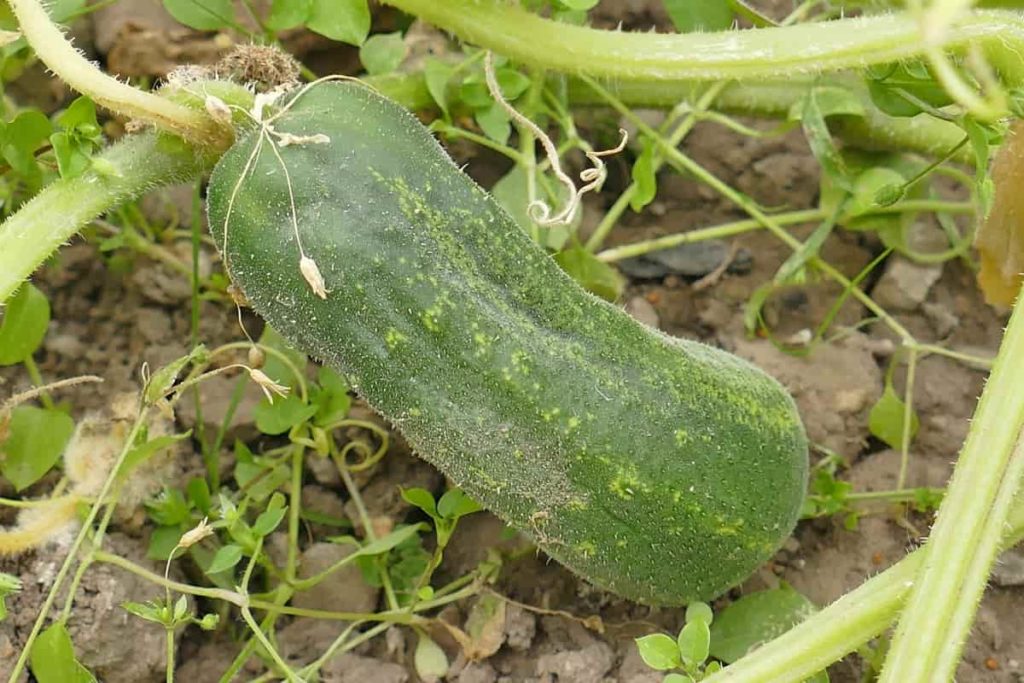
When to plant Cucumbers in Northern California?
Cucumber seeds should be sown in April in Northern California in particular. If you’re transplanting bigger, partially grown seedlings from a greenhouse, you can wait a few weeks to give the plants a head start in the growing season. When transplanting, however, use caution since the stems are very sensitive and can easily be injured.
When to plant Cucumbers in Southern California?
Cucumbers thrive in Southern California, but they may be finicky. They thrive in warm, sunny environments with temperatures ranging from 55 to 85 degrees Fahrenheit. Temperatures below 50 ℉ and above 85 ℉ cause cucumbers to become sensitive and agitated. In Southern California, cucumber seeds should be planted outdoors from the beginning of April or May through July or August.
Plant pre-germinated cucumber seeds or seed straight outdoors in Southern California coastal locations from April or May to July or August, when temperatures are still comforting for cucumbers. Use heat-tolerant types and kinds that can withstand harsh temperatures.
How much sun do Cucumber plants need in California?
Cucumber plants like full sun, so find a location in your yard where they will get at least 8 hours of sun every day. While cucumbers enjoy warm weather, they do not tolerate severe heat, so find a location that provides some shade in the afternoon to keep them cool.
Soil temperature for Cucumber plants in California
Cucumbers require ideal soil temperatures ranging from 70 to 95 ℉. Cucumbers should not be planted until the soil temperature reaches a minimum of 70 ° F. Planting may have to wait until two weeks after the last frost in your location, depending on how well-protected the containers are and the material they’re made of. Certain container materials heat up faster than others. Black plastic pots, for example, retain heat and reach the correct temperature faster than other materials.
In case you miss this: Cucumber Planting Frequently Asked Questions
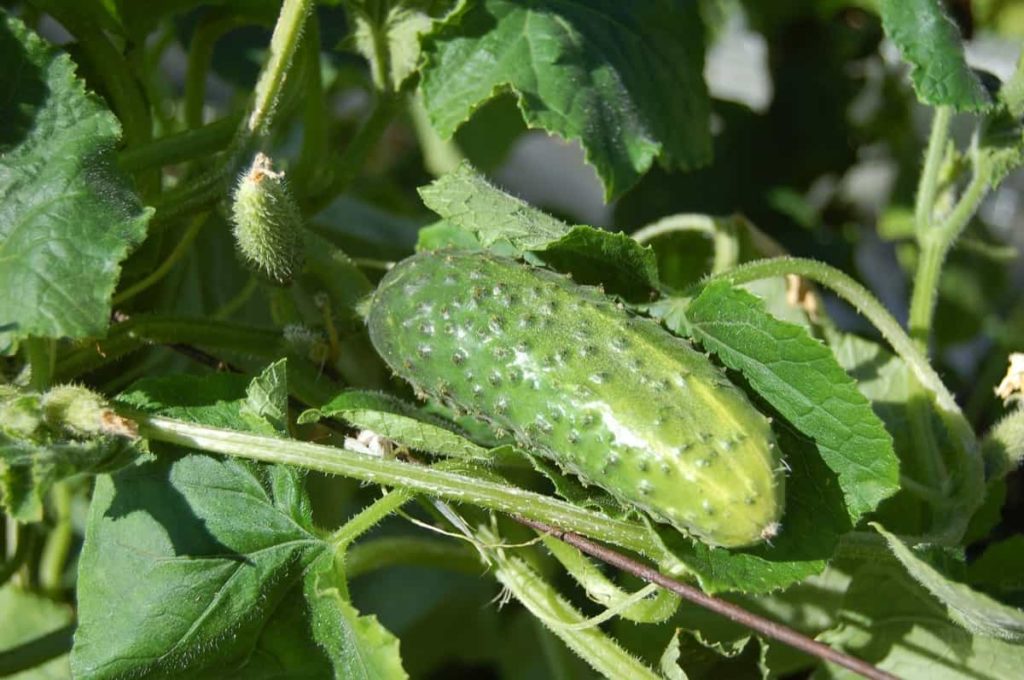
Choose seeds over seedlings
Cucumbers are simple vegetables to grow from seeds in a container or a backyard garden. You can start seeds inside if you live in a cold region and want to get a head start on the season. Cucumber seeds are huge, so plant them 1/2 to 1 inch deep. Place the seedlings under grow lamps following germination to ensure they get adequate light. Be careful, when transplanting seedlings. To progressively adapt your seedlings to outside surroundings, you must first harden them off. Cucumbers roots should not be disturbed so be careful while placing them into permanent containers.
Watering and care for Cucumber plants
Cucumber plants are strong feeders and love wet soil, so be sure you feed and water them regularly. Mix at least a few layers of compost into your soil to get them off to a good start. Once your plants are established, side-dress them with compost at least once a month to keep the soil nutrient-rich.
Cucumbers require weekly watering throughout the summer, but they will demand more during hot, dry months. Adding a layer of mulch to the soil can help it retain moisture. You’ll also need to pick any weeds that pop up regularly so they don’t feed on water and nutrients that cucumber needs.
Mulching for Cucumber plants
Cucumbers benefit from chopped or shredded leaves as a summer mulch. Leaves allow rainfall to enter into the soil while also sheltering the land underneath them from evaporation processes. They also supply vital nitrogen to the soil structure. Cucumbers can’t photosynthesize and produce delicious fruits if they don’t have enough nitrogen to generate chlorophyll.
Wait until the cucumber seedlings are 3 inches tall before mulching with this organic option, and maintain the leaves at a 3- to 4-inch distance from the plant’s base to avoid stem illnesses caused by excessive wetness. Mulches made of black plastic and shredded newspaper can also be used.
In case you miss this: Tips For Growing Cucumbers, Ideas, And Secrets
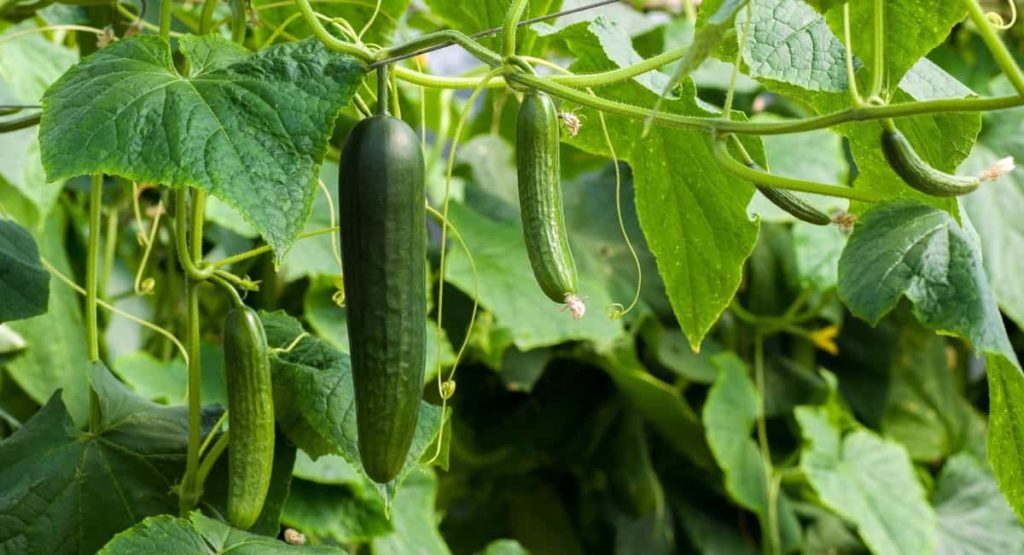
Fertilizing the soil for growing Cucumbers in California
Ensure that there is enough nitrogen available throughout the growth and harvesting seasons. Cucumbers require nitrogen to develop fast and provide a large harvest. Composted manure and nutrient-rich compost should be used in large amounts to amending soils. Before planting cucumbers, single-dig or double-dig the soil to loosen it to a depth of at least 12 inches, remove stones and impediments, and apply compost and composted manure.
Plant pre-germinated seeds straight onto mounded hills raised beds, or containers with enough room in gardens with fresh, uncultivated, infertile, or compacted soils. In the beds, use a combination of washed sand, topsoil, and up to 20% composted manure and nutrient-rich compost.
Pests and diseases management of Cucumber
Cucumber beetles and powdery mildew are the most typical problems you’ll encounter when producing cucumbers in your backyard garden. Cucumber beetles are most harmful when seedlings first emerge, so starting your plants indoors and transplanting them into your yard after they have matured into young plants is a simple method to avoid this problem.
Alternatively, you may buy young plants to transplant in your yard from a nearby nursery. Use row covers to safeguard your plants as they grow if you wish to start your seeds in the ground. To allow for pollination, you’ll need to remove the row coverings as soon as you notice blossoms.
Can you grow Cucumbers year-round in California?
In many parts of California, finding a window that matches the temperature range that cucumbers require can be difficult, if not impossible. In hot-summer inland locales, such as Southern California, there may not be a 60- to 70-day growth season that matches temperature standards for cucumbers every year.
In case you miss this: Growing Organic Cucumbers In Containers, Pots
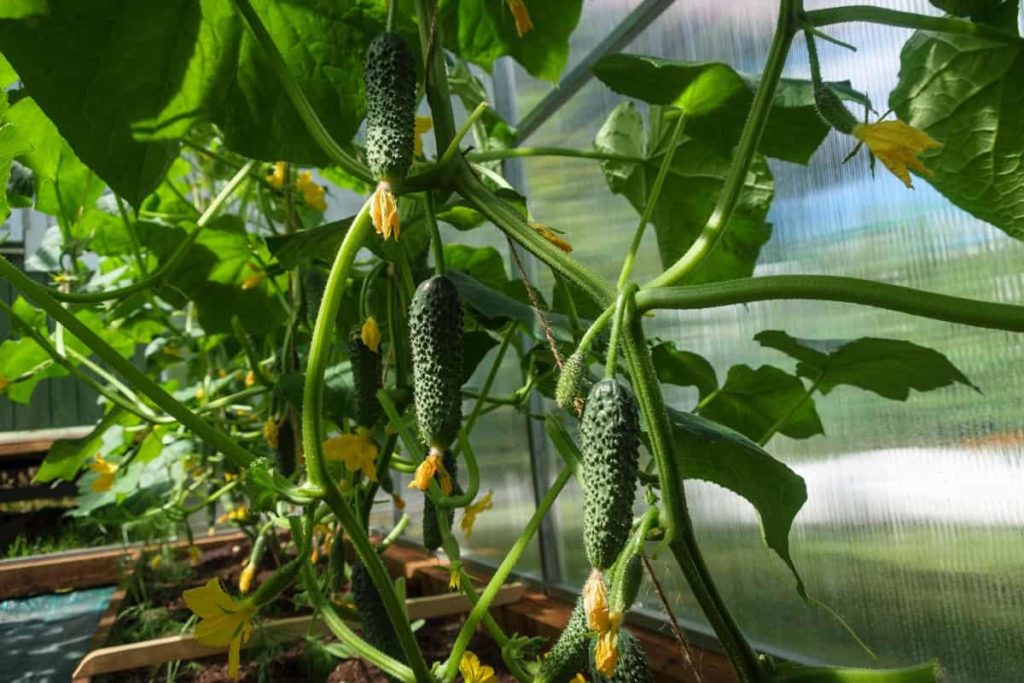
Cucumbers in these environments require careful variety selection and considerable work to produce high yields. Cucumber plants may develop slowly or become stunted, yield little or no fruit, or become susceptible to pests and illnesses if their demands aren’t satisfied.
Growing Cucumbers in summer in California
Cucumbers grow well in California in the summer season. They thrive in warm, sunny environments with temperatures ranging from 55 to 85 ℉. Temperatures below 50 ℉ and above 85 ℉ cause cucumbers to become sensitive and agitated. In Southern California, cucumber seeds should be planted outdoors from the start of April or May through July or August.
When it comes to watering the plants in summer, consistent and adequate moisture is required for a successful cucumber crop; the container soil must be wet but not soggy. Stick your finger up to the second knuckle into the soil to check for wetness. The container or the soil in the backyard does not require water if the soil is moist at your fingertip.
If the soil is dry, steadily add water until it pours out of the drainage hole in the container. Check to see if the soil is soaking up the water. If the soil is exceptionally dry, it can pull away from the container’s walls, allowing water to pour down the sides before the soil has a chance to absorb it.
Growing Cucumbers in winter in California
First and foremost, we must understand how the cold impacts cucumber development. According to research, as the temperature drops in the winter, it not only inhibits the cucumber plant’s development but also causes chilling harm. Cucumber plants cannot grow below 60 degrees Fahrenheit because prolonged exposure to 55 degrees Fahrenheit might induce chilling harm. Cucumbers need a temperature of at least 60-70 degrees Fahrenheit to develop well.
Cucumbers that are cultivated at temperatures below 60 degrees Fahrenheit are prone to chilling injury. In late summer planted cucumber, you should be on the lookout for signs of cold injury. Water-soaked patches, pitting, and plant rotting are all symptoms of harm. A cucumber cultivated in an area where the temperature swings might taste bitter, therefore if there is a chance of temperature variations of 20 degrees or more, you should plant bitter-resistant kinds.
Two methods to grow Cucumbers in winter in California
Growing Cucumbers in a container
Cucumbers cannot live in locations where the external temperature is chilly. You’ll put them in a container and keep them outside until the weather starts to cool down. Shift them to the inside container as soon as the temperature starts to decrease. Cucumbers require a 20-inch-wide, 16-inch-deep container per plant for indoor gardening, as well as a wooden trellis to support the developing plant and boost output. Bush cucumber kinds such as salad bush and pickling bush varieties are two typical cucumber varieties that grow nicely in containers.
In case you miss this: Growing Cucumbers in Pots from Seed, Cucumber Care
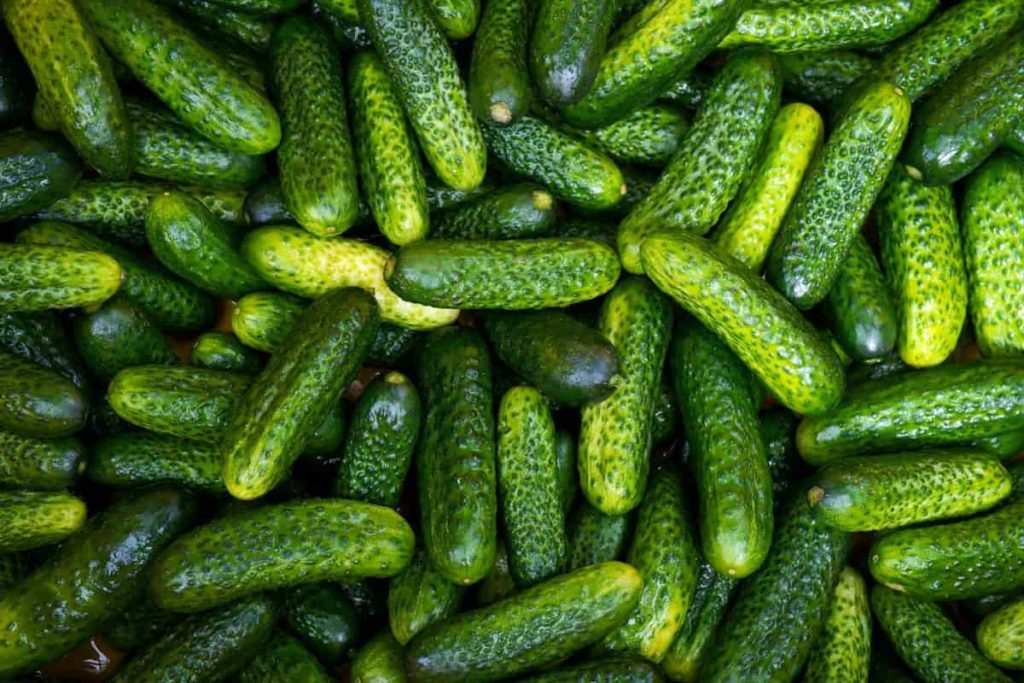
Growing Cucumbers by using row covers
Later in the season, row coverings can give extra protection and heat for cucumbers. Row coverings can raise the air temperature for covered cucumbers by up to twenty degrees in the middle of the day, depending on the material used. Row covers come in two types: greenhouse, floating, and tunnel, and both raise daytime temperatures. Fabric, on the other hand, can make a difference; bonded textiles decrease sunlight to plants by 10% compared to transparent plastic, while polypropylene retains more radiant heat at night than polyethylene.
- Broccoli Seed Germination and Selection
- Asparagus Seed Germination and Variety Selection
- Seasonal Flower Gardening: Best Practices for Spring, Summer, Fall, and Winter
- How to Grow Hibiscus from Flower
- Plantation Ideas for Home Decoration: A Beginners Guide
- Flower Garden Designs and Layouts for Beginners
- Planting and Spacing Techniques in Papaya: A Beginner’s Guide
- Growing Gold: Essential Techniques for Planting Pineapples
- How to Make Kalanchoe Plant Bushy: Home Remedies and Solutions
- 11 Reasons Why Your Gardenia is Not Blooming: Home Remedies and Solutions
- Eco Elegance: The Guide to Designing a Drought-Tolerant Landscape
- Gardening on a Slope: Strategies for Hillside Landscaping
- Nourish and Flourish: Top Organic Mulches for Thriving House Plants
- Everything You Want to Know about Indian Mogra Flower: Discover Uses and Growing
- Green Thumb Success: Expert Tips for Cultivating Greenhouse Pumpkins All Year Round
- Maximize Growth & Flavor: The Ultimate Guide to Companion Planting in Herb Gardens
- How to Control Rhododendron Problems Naturally: Home Remedies and Organic Ways to Fix Them
- Natural Magic: The Remarkable Benefits of Cinnamon for Plants
- Best Steps to Revive Dying Tulip with Natural and Organic Treatment
- 10 Reasons Why Your Angel Trumpet is Not Blooming: Remedies and Treatment
- How to Fix Periwinkle Leaf and Flower-Related Problems: Natural Remedies and Solutions
- How to Fix Zinnias Leaf and Flower Problems: Discover Natural and Home Remedies
- Organic Steps to Induce Lemon Tree Flowers: A Comprehensive Guide
- Bloom Booster: Crafting the Perfect Homemade Bougainvillea Fertilizer
- Optimizing Growth: A Guide to Applying NPK Fertilizer for Potted Plants
- 10 Best Homemade Fertilizers for Rubber Plant: DIY Recipes and Application Method
- How to Boost Female Pumpkin Flowers: Effective Steps for More Flowers and High Yields
- Transform Your Indoor Garden: Top Benefits of Pink Salt for Houseplants
- 10 Best Homemade Fertilizers for Peacock Plants (Calathea): Easy DIY Guide
- Unlock Blooms: 9 Reasons Why Your Potted Chrysanthemum is Not Blooming
- 8 Reasons Why Your Potted Hibiscus is Not Blooming: Fix it with Simple Solutions
- Unlock Blooms: 9 Key Reasons Your Potted Frangipani Won’t Flower
- 10 Reasons Why Is My Ice Plant Not Blooming: Remedies and Treatment
- 10 Reasons Why My Potted Hydrangea Not Blooming: Treatment and Remedies
- 10 Reasons Why is My Wisteria Not Blooming: Remedies and Treatment
- 10 Reasons Why is My Goldfish Plant Not Blooming: Remedies and Treatment